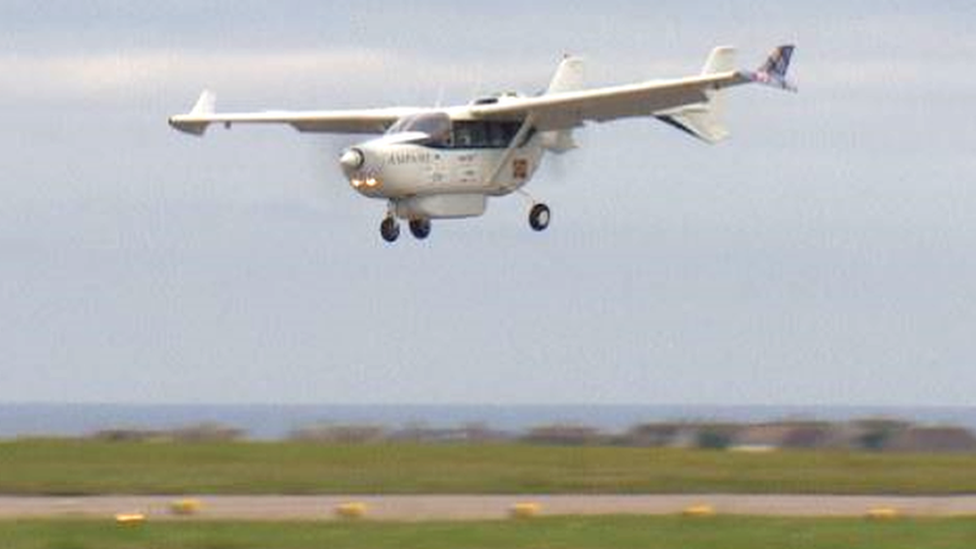Large electric aircraft could deliver freight to isles
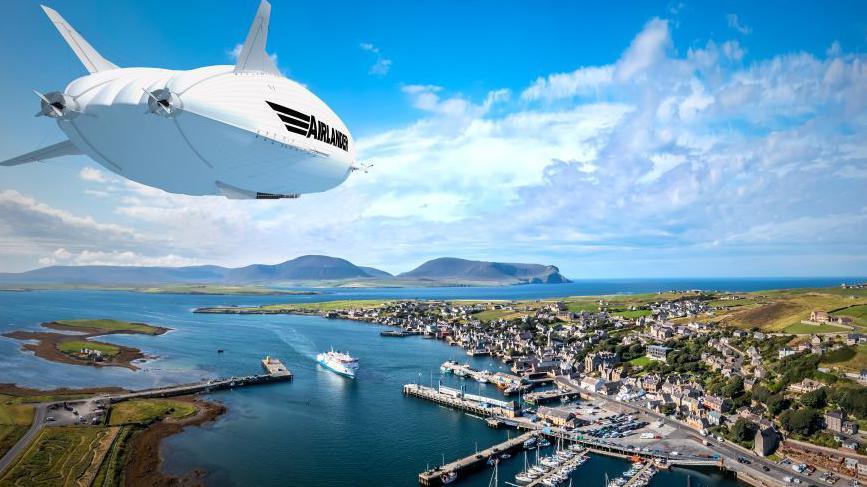
Concept art of an Airlander 10 aircraft
At a glance
Aircraft described as part-plane, part-airship could one day be delivering freight to the Highlands and Islands
Bedford-based Hybrid Air Vehicles commissioned a study into the use of its Airlander 10 in the region
The company has already tested a prototype and is working on an electric version of the aircraft
The research suggests there is potential for Airlanders to operate in Shetland, Orkney and the Hebrides
- Published
A study has suggested an aircraft that is part-plane, part-airship could deliver tonnes of freight around the Highlands and Islands.
Bedford-based Hybrid Air Vehicles (HAV) has looked at how its Airlander 10 transport could operate from sites in Orkney, Shetland, Western Isles and the Highlands.
According to its research, a fleet of the aircraft could provide 79% more air freight capacity on north of Scotland air routes compared with 2021.
Public transport body Hitrans, Highlands and Islands Enterprise, Orkney Islands Council and Glasgow-based airline Loganair were involved in the study.
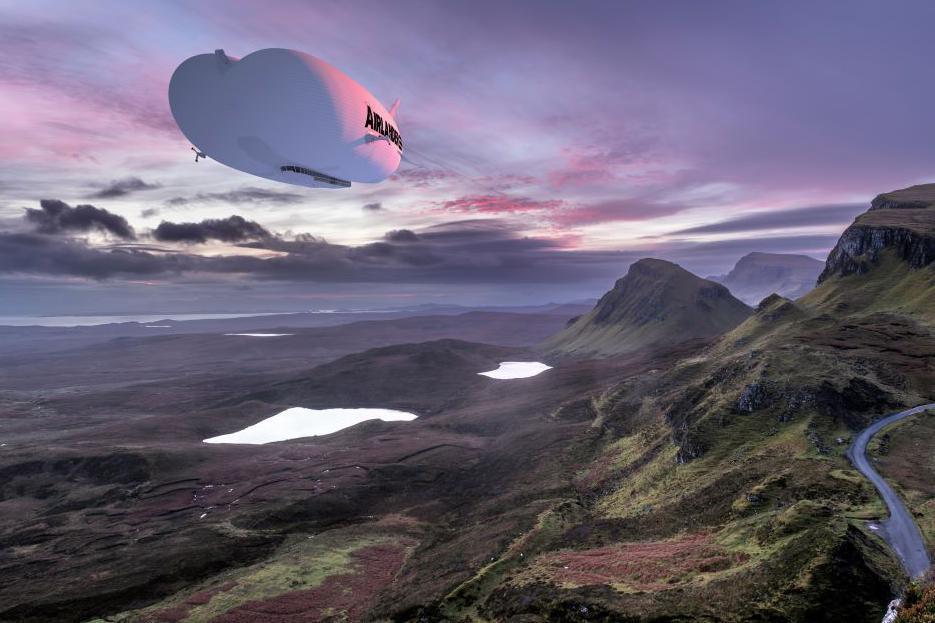
Bedford-based HAV believes its Airlander 10 could operate over the Highlands and Islands
HAV has previously carried out test flights of its Airlander in England using a prototype.
It was the world's longest aircraft at 302ft (92m) and completed six successful test flights.
The prototype was retired in November 2017 after it broke free from its mooring mast, triggering a safety system which deflated the aircraft.
An investigation found that a locking mechanism was not inserted correctly, and there was no evidence of structural failure.
HAV has been designing an all-electric variant of the Airlander 10.
The company said it would be a zero-carbon emissions aircraft and was scheduled to be operational by the end of the decade.
The aircraft, which combines airship and fixed-wing aircraft technology, could carry 100 passengers or 10 tonnes of freight.
HAV has proposed constructing Airlanders at a purpose-built facility in South Yorkshire.
It said eventually up to 24 new aircraft could be produced every year, with the work supporting 1,200 jobs.
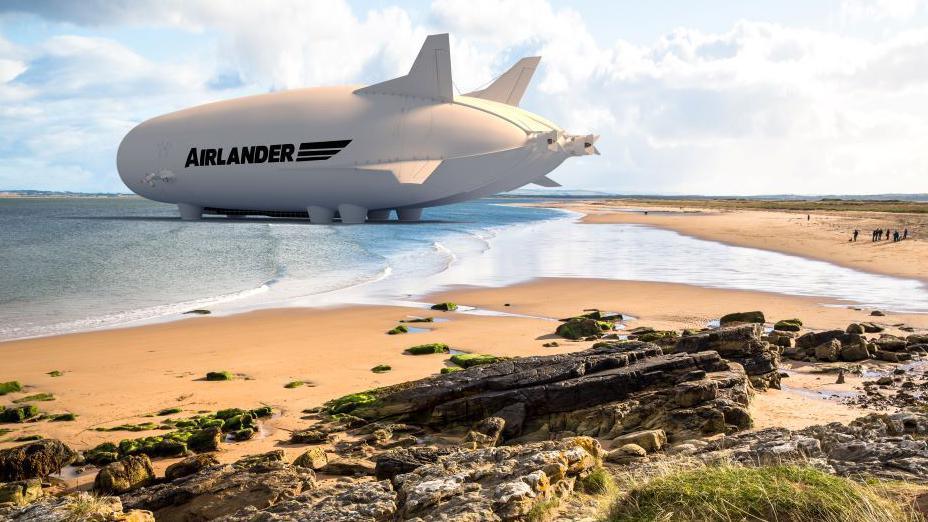
An artist's impression of the aircraft landing at Barra's beach runway
HAV said the Highlands and Islands had long been a potential target market for the company.
The results of the three-month-long study by consultants AECOM suggested the aircraft could add 43,800 tonnes more freight a year for the north of Scotland.
HAV said this was equivalent to 21.9 million extra average-sized parcels.
Researchers looked at the potential of landing sites at Kirkwall, Scapa Bay and Papa Westray in Orkney, Stornoway and Barra in the Western Isles, Sumburgh in Shetland and Inverness Airport.
The study took into consideration weather information going about 30 years and what adaptations would be needed to existing airport infrastructure.
The total cost of modifying six regional airports was estimated to be about £2m.
George Land, of HAV, said the Airlander 10 would compliment existing forms of islands transport - passenger planes and ferries.
He said the next step would be to work with Orkney Islands Council on developing plans for the introduction of the aircraft in its area in the coming years.
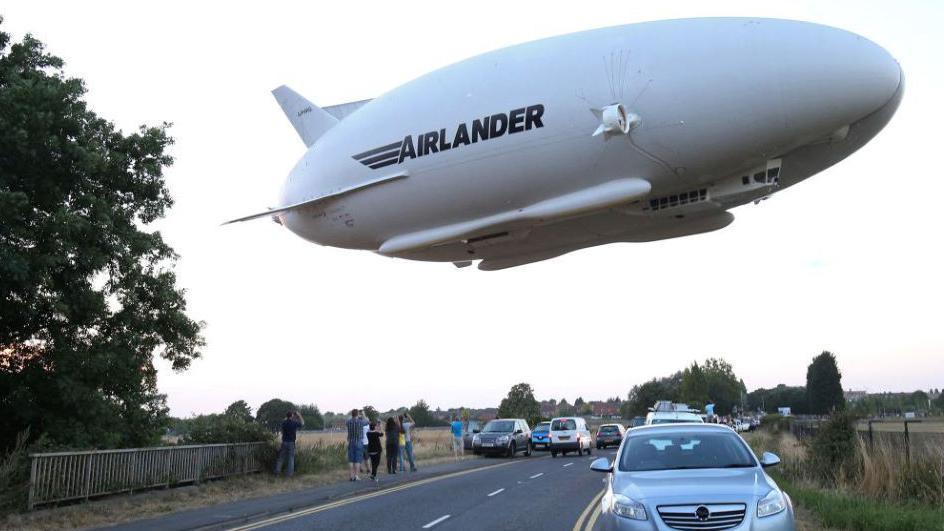
Airlander pictured on its maiden flight near Bedford in 2016
Scottish government-owned Highlands and Islands Airports Ltd, which runs airports in Shetland, Orkney, Hebrides and Highlands, has been working on plans to create a low-carbon aviation zone.
The zone would involve using drones and hybrid electric aircraft on lifeline services.
Last year, the project won almost £9m funding from UK Research and Innovation.
Related topics
- Published13 September 2023
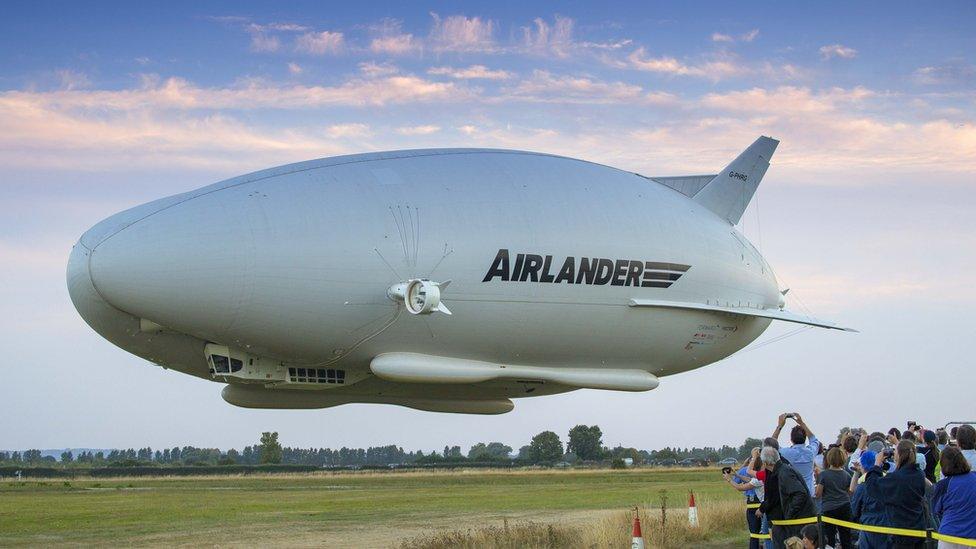
- Published15 June 2022
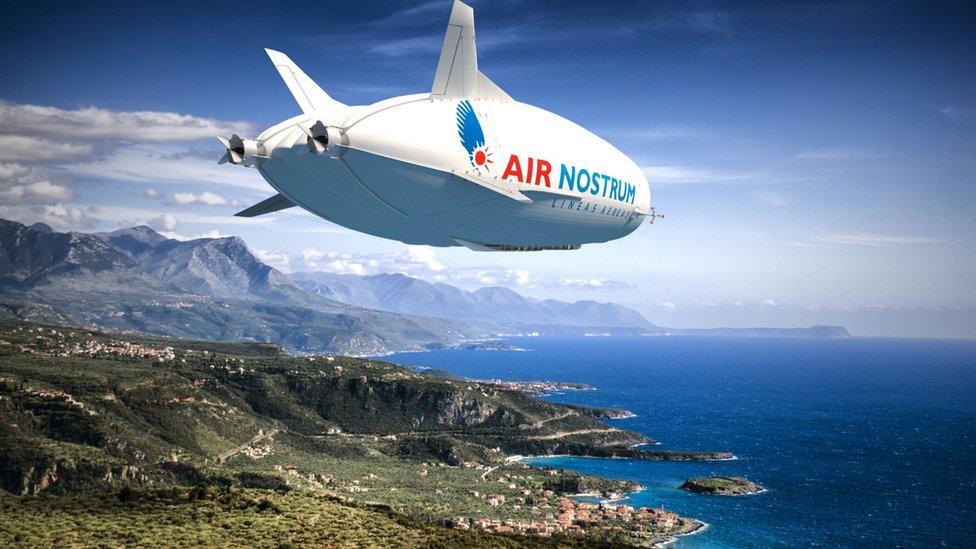
- Published9 November 2022
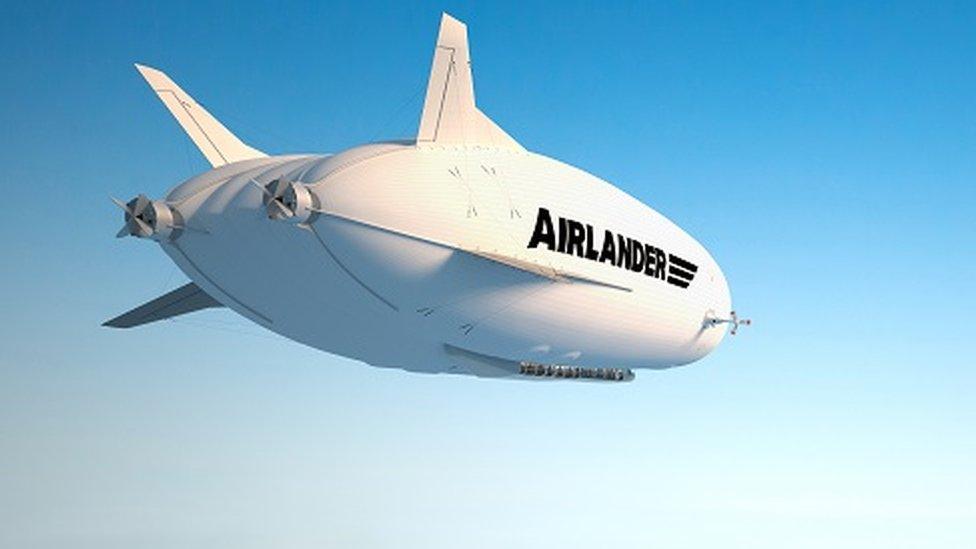
- Published18 July 2022
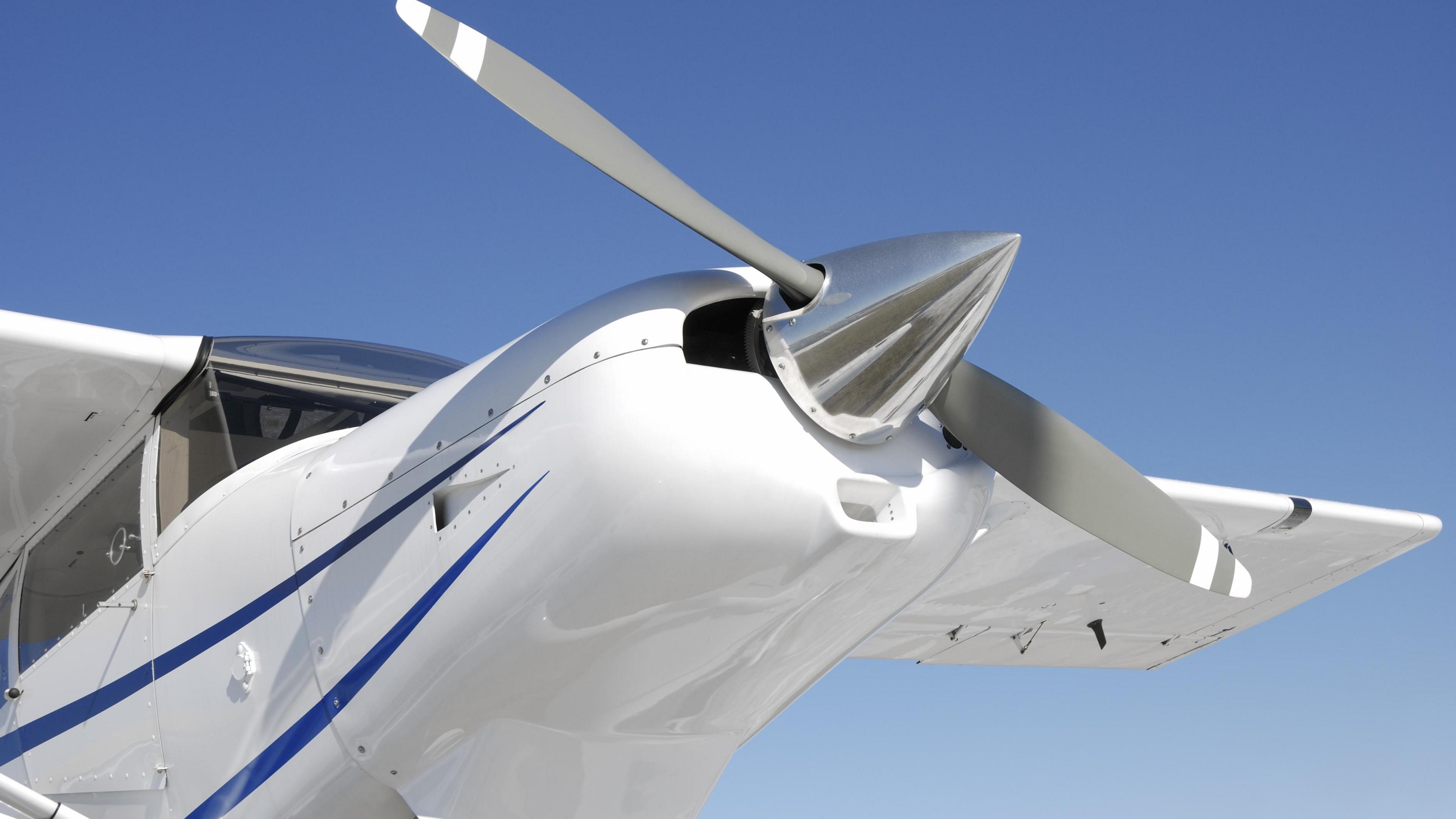
- Published12 August 2021
